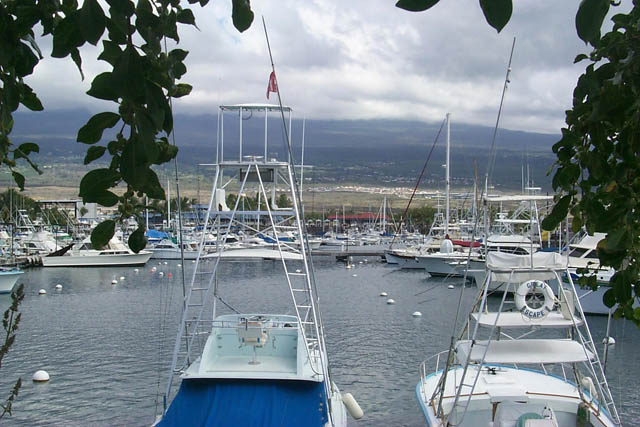As pointed out earlier this year by members of the public and the press, the state Department of Land and Natural Resources’ management of its month-to-month revocable permits (RPs) has, at the very least, resulted in the state receiving far less revenue than what it could be getting for the use of public lands and waters. By allowing permittees to retain their permits for years — or even decades — with little or no change in rent or any opportunity for others to bid on them, the DLNR is likely losing out on millions of dollars a year. The DLNR’s Revocable Permit Task Force set up by director Suzanne Case was slated to report to the Legislature by the end of last month its findings and recommendations on best practices for issuing revocable permits and those practices are expected to be in place by June 30. Based on discussions at the Board of Land and Natural Resources’ March 24 meeting regarding the DLNR Division of Boating and Recreation’s (DOBOR) permits, however, it’s clear that fully resolving the various issues surrounding the department’s RPs will likely take years.
Last July, the Land Board voted to increase the rent of and continue for one year 33 RPs managed by DOBOR, none of which had been officially renewed since at least 2011. DOBOR, relying almost exclusively on two agents borrowed from the department’s Land Division, had recently discovered that not only were its RPs not being properly renewed, but that the rents being charged were scandalously low. The agents found that the division was receiving only $277,654 in rent a year from the permits, which cover nearly 20 acres of state land. In other words, the division was only charging an average of 32 cents per square foot for its lands. For 16 of those permits, where DOBOR was charging $200 or less a month, the rate was only a penny per square foot. This despite the fact that for more than half of the area encumbered by all of the RPs, the current market value ranged between $4 and $82 per square foot, they found.
“There’s no rhyme or reason as to how these rents were established,” DOBOR administrator Ed Underwood told the Land Board at the July meeting.
As it reported to the Land Board at its March 24 meeting, the division is working toward getting fair market appraisals for the properties under RPs that are worth appraising. (Some RPs cover areas as small as 36 square feet and would not generate enough revenue to justify the cost of an appraisal. Rent for those properties may be determined another way, according to DLNR staff.)
Once true market rents are determined, the division will get a sense of the real demand for the permits, Keith Chun told the Land Board at its March meeting. Chun is one of the two Land Division agents who assisted in DOBOR’s permit review.
“We always hear, ‘Well I want that land.’ When the rent is really cheap, of course everybody wants it,” he said. When the rents department-wide are finally set at market rates, however, it may be a different story, especially given how deeply rents are currently discounted.
“You read in the paper the rents are discounted 25 percent and 50 percent or what have you. Whether that is valid or not, the misleading part is a lot of these RPs … have been in existence for 20 or 30 years. In 1990, it may have been a 25 percent discount. But in today’s rents, that thing is not 25 percent,” he said. In 2013, staff worked with an appraisal firm to assess all 350 RPs managed by the Land Division. The preliminary findings: rents were 1000 to 4000 percent below market rent, Chun said.
“Obviously, you’re going to get people around saying well how come I can’t get an RP like that, but if you actually brought it to market rates, it would probably flush out some bottom feeders. What Ed is doing now will get us a better idea of what we should be charging,” he said.
With regard to the matter of which permit areas should be put up for a lease, DOBOR and Land Division have found that a number of the RPs are for areas that are part of larger lots that have not been subdivided. To retain the option of leasing out the rest of the land not used by a permittee, the DLNR may have to subdivide, or possibly establish a condominium property regime, if it wants to eventually issue a long-term lease. Otherwise, the department could issue a lease for a small area of use “and it could encumber 300 acres,” Chun said.
Honokohau small boat harbor is one such case, where the sole permittee, GKM,Inc, has a permit that covers only nine acres, while the tax map key lot actually includes about 100 acres. With pressure on the use of that area growing, Chun said, the department needs to make sure the lands there allow for expansion and that any expansion be planned out and not done “in a piecemeal fashion.”

Whether or not subdivision issues need to worked out, Case stated, “if it’s an RP, it should be available for competition pretty much at all times. Where public mistrust comes in is if they don’t feel like there’s an open process, [that some] guys have an inside deal on it and we’re going to continue to renew year, after year, after year.”
Raising rents to market rates may dampen competition over those permits or even force the current permittees out. In any case, Case said, “I want to affirm the state’s obligation to charge fair market rent. … If people don’t like it, it’s a political thing. I know there is pressure that comes on either side of that.”
For more information, see our February Board Talk column.
— Teresa Dawson
Volume 26, Number 11 May 2016


Leave a Reply